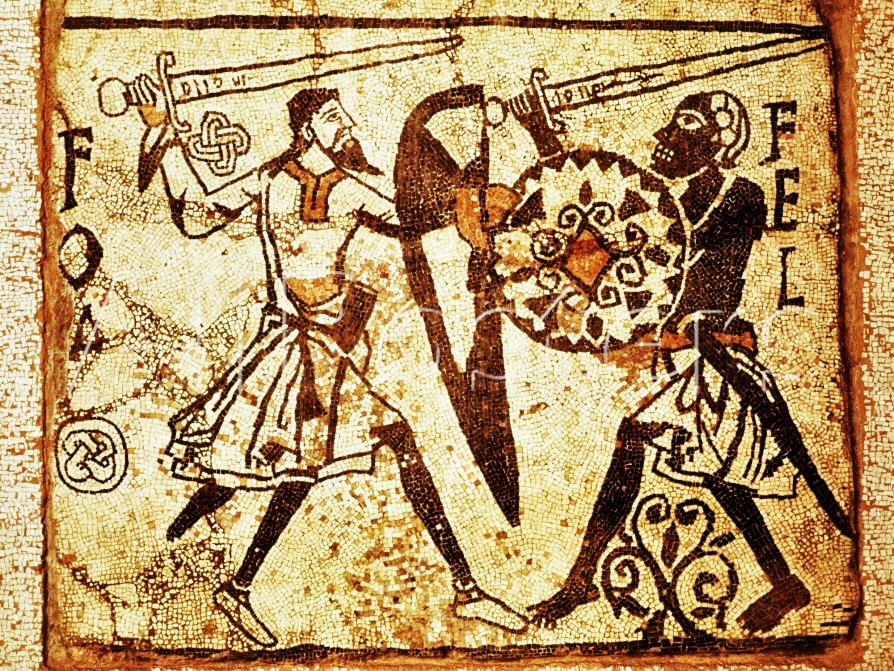This portrays two fighters dueling with shields and swords.
The influences of these mosaics are rooted in late antique impressionism that could be seen in frescoes, manuscript paintings and many pavement mosaics across villas in Africa, Syria and Sicily during the 5th century.

The utterances they shout at each other are reproduced in written form: fol! ‘idiot’ on the lefthand edge of the picture and fel! ‘villain’ on the righthand.
Vercelli (Piemont); about 1040
(Mosaic from the church of St. Maria Maggiore)
The mosaics found in Santa Maria Maggiore are not just incredibly beautiful works of Late Antique art; they are also one of the oldest representations of the Virgin Mary in Christian Late Antiquity. As one scholar puts it, “This is well demonstrated by the decoration of Santa Maria Maggiore in Rome,… where the iconographic depiction of the Virgin Mary was chosen at least in part to celebrate the affirmation of Mary as Theotokos (bearer of God) by the third ecumenical Council of Ephesus in 431 CE.” The mosaics of the triumphal arch and the nave in Santa Maria Maggiore were the definition of impressionistic art during the time period and gave a model for the future representations of the Virgin Mary.
These mosaics gave historians insight into artistic, religious, and social movements during this time. As one scholar explains that mosaics in Santa Maria Maggiore had two goals: one to glorify the Virgin Mary as Theotokos, (God-Bearer); and the other as the scholar puts is “a systematic and comprehensive articulation of the relationship of the Hebrew Bible and the Christian scriptures as one in which the Hebrew Bible foreshadows Christianity.” This is explained by the dual images of Old Testament and New Testament events depicted in the mosaics of the triumphal arch and the nave. The mosaics also show the range of artistic expertise and refute the theory that mosaic technique during the time was based on copying from model books. The mosaics found in Santa Maria Maggiore are combinations of different styles of mosaic art during the time. As one scholar puts it “the range of artistic expertise and the actual complexities of production can hardly be reduced to a mentality of copying. A test case is given by the mosaics of S. Maria Maggiore in Rome”.
–A Caucasian & a Negro Swordsman Fighting, Vercelli, Italy, 11th century
–aseantoo submitted: Unknown artist Two Swordsmen Fighting Italy

No Comments Yet